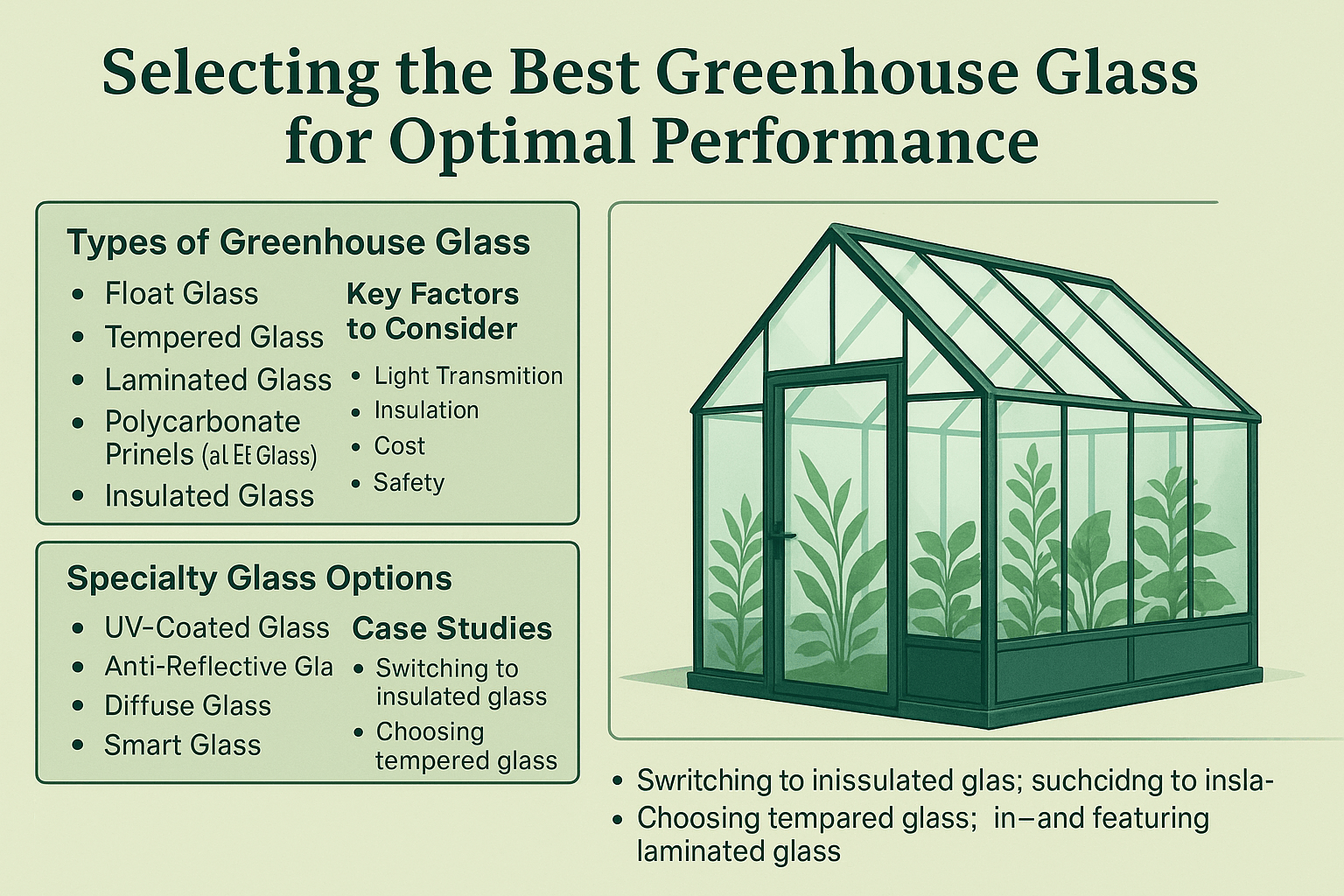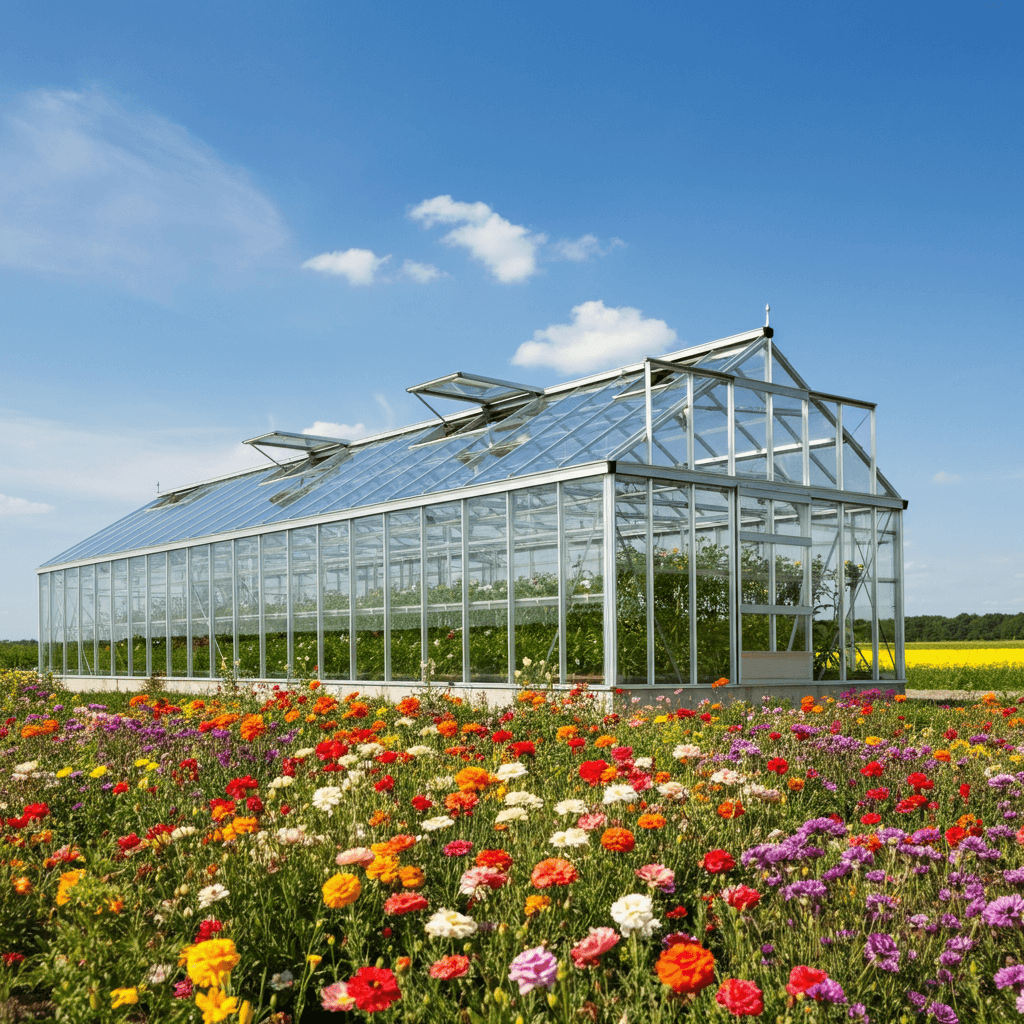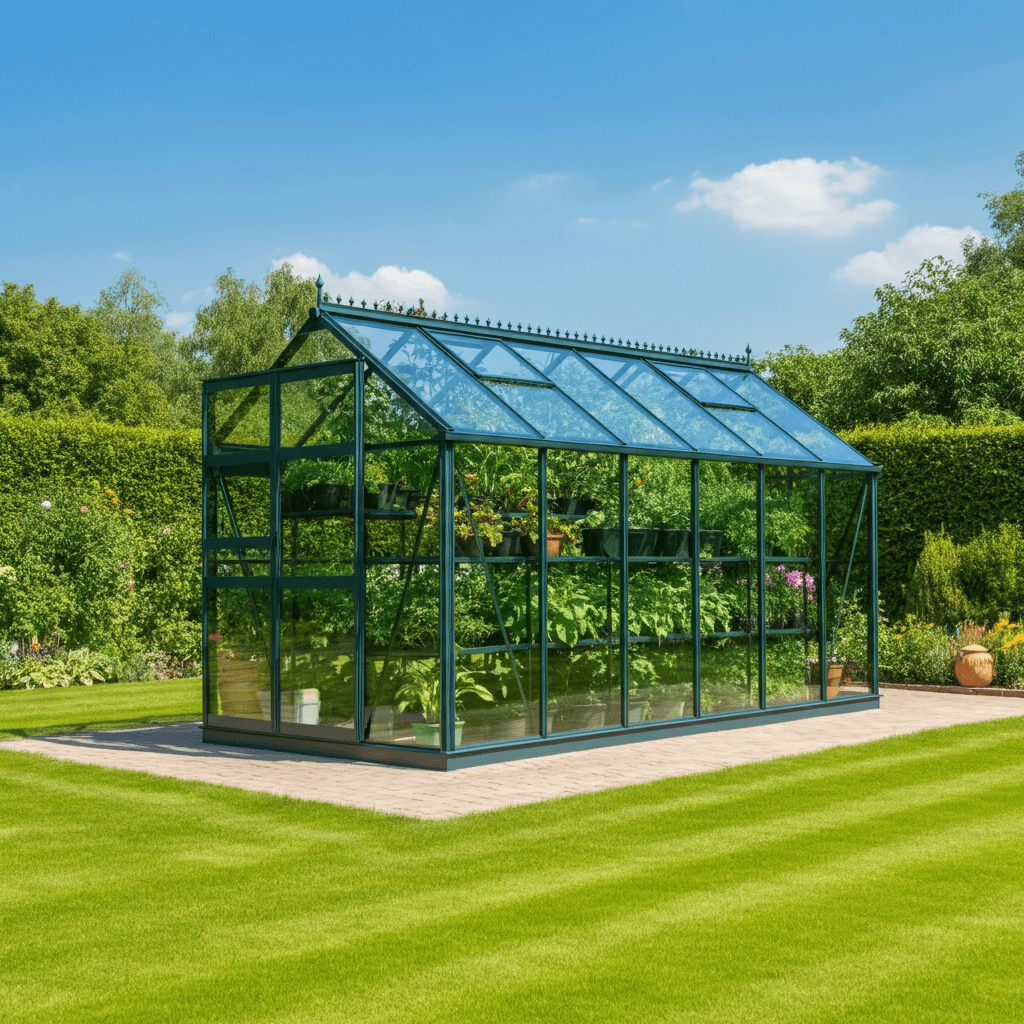Selecting the Best Greenhouse Glass for Growth
Release time:
2025-05-10 17:36
Selecting the Best Greenhouse Glass for Optimal Performance

Greenhouses are a gardener's haven, providing the ideal environment for cultivating plants year-round. However, the quality and type of glass used in your greenhouse can make all the difference. It impacts factors like light transmission, insulation, safety, and cost. Selecting the best glass involves balancing these elements with your specific needs.
This comprehensive guide will help architects, horticulture enthusiasts, interior designers, and DIY gardeners identify the most suitable greenhouse glass. We'll explore various glass types, key factors to consider, specialty options, and practical examples to ensure you make an informed decision.
Types of Glass for Greenhouses
Choosing the right glass depends on your goals. Here's a look at commonly used materials and their pros and cons:
1. Float Glass
Float glass is the most basic type of glass commonly used in greenhouses.
Definition
It is a flat, clear glass produced by floating molten glass on a bed of molten metal.
Advantages
- Cost-effective: Float glass is budget-friendly, making it ideal for entry-level greenhouses.
- Good light transmission: High transparency ensures ample sunlight for plants.
Disadvantages
- Poor insulation: Limited capacity to retain heat, leading to higher energy costs in colder climates.
- Shatter risk: Breaks easily, posing a safety concern.
Best for: Hobby greenhouses in mild climates.
2. Tempered Glass
Tempered glass is a stronger, safer version of float glass that's heat-treated to improve durability.
Definition
It undergoes thermal tempering to increase strength and safety.
Advantages
- Strength: Up to four times stronger than regular float glass.
- Shatter-resistant: Breaks into small, safe fragments, reducing injury risks.
Disadvantages
- Higher cost: More expensive than float glass.
Best for: Greenhouses in areas prone to harsh weather or where safety is a priority.
3. Laminated Glass
Laminated glass consists of multiple layers of glass bonded together with a plastic interlayer.
Definition
It features a durable interlayer that holds the glass together when shattered.
Advantages
- High safety: The interlayer prevents glass panels from breaking apart.
- UV protection: Shields plants from excessive UV exposure.
- Sound insulation: Reduces external noise.
Disadvantages
- Higher cost: Among the more expensive options.
Best for: Greenhouses in urban areas or where UV protection is essential.
4. Polycarbonate Panels (Alternative to Glass)
While not glass, polycarbonate is a popular, lightweight material for greenhouses.
Definition
A synthetic material made from polycarbonate polymers, available in panels.
Advantages
- Lightweight: Easy to install.
- Durable: Resistant to impact and weather wear.
- Good insulation: Retains heat more effectively than most glass types.
Disadvantages
- Yellowing: Can discolor over time due to sunlight exposure.
- Lower light transmission: Allows slightly less light compared to glass.
Best for: Larger greenhouses where weight and durability are key concerns.
5. Insulated Glass (Double-Pane Glass)
This is a premium solution for maintaining stable indoor temperatures.
Definition
Two panes of glass separated by a gas-filled cavity to enhance insulation.
Advantages
- Superior insulation: Reduces heating costs and protects plants from temperature fluctuations.
- Energy efficient: Minimizes heat loss.
Disadvantages
- High initial cost: Significant upfront investment.
Best for: Commercial greenhouses focusing on energy savings.

Key Factors to Consider
When selecting greenhouse glass, it’s crucial to consider these factors:
Light Transmission
The quality of light entering a greenhouse significantly affects plant growth. Most plants require high levels of light to thrive.
Type of Glass | Light Transmission Rate |
|---|---|
Float Glass | ~90% |
Tempered Glass | ~88% |
Laminated Glass | ~85% |
Polycarbonate | ~80% |
Insulated Glass | ~78% |
Float and tempered glass offer the best light transmission, but polycarbonate excels in durability.
Insulation
A glass's insulation ability (measured using R-values) helps control internal temperatures. For example:
- Float Glass: R-Value ~0.85
- Insulated Glass: R-Value ~1.5–2.0 (excellent).
Insulated glass is better suited for greenhouses in colder regions.
Cost
Analyzing the long-term costs is important. Laminated and insulated glass have higher initial costs but result in better durability and energy savings over time. For smaller budgets, float glass or polycarbonate may suffice.
Glass Type | Approximate Cost (per sq. ft) |
|---|---|
Float Glass | $7 - $10 |
Tempered Glass | $15 - $20 |
Laminated Glass | $25 - $35 |
Polycarbonate | $4 - $6 |
Insulated Glass | $40 - $60 |
Safety
Shattering glass can pose serious risks. Laminated and tempered glass are ideal for greenhouses where safety is a concern. They reduce the likelihood of injury in case of breakage.
Specialty Glass Options for Greenhouses
For advanced projects, these options provide additional functionality:
1. UV-Coated Glass
- Purpose: Blocks harmful UV rays for plant and user safety.
- Cost: Moderate to high, depending on the coating.
2. Anti-Reflective Glass
- Purpose: Maximizes light transmission by reducing glare.
- Ideal For: Professional greenhouses focused on high plant yields.
3. Diffuse Glass
- Purpose: Distributes light evenly for uniform plant growth.
- Benefit: Prevents plant scorching from direct sunlight.
4. Smart Glass
- Purpose: Allows for adjustable opacity to control light and heat.
- Disadvantage: Very expensive, primarily used in advanced installations.

Case Studies on Greenhouse Glass Usage
Here’s how greenhouse owners benefit from tailored solutions:
- Case Study 1: A commercial grower in Canada saved over 30% on heating costs by switching to insulated glass.
- Case Study 2: A DIY gardener in California chose tempered glass for its strength and safety benefits during high winds.
- Case Study 3: A hobby greenhouse featured laminated glass for UV protection and added sound insulation in an urban environment.
DIY Tips for Glass Installation
For those installing greenhouse glass themselves:
- Accurate Measurements: Measure panels precisely to avoid gaps.
- Safety First: Wear safety gloves and goggles when handling glass.
- Proper Sealing: Use high-quality sealant to ensure airtight insulation.
- Stable Frames: Ensure the frame is sturdy enough to support the glass material.
Top Takeaways for Greenhouse Glass Selection
Selecting the right greenhouse glass should be based on your location, climate, and specific requirements. For energy efficiency, insulated glass is the standout choice. If budget is key, float glass or polycarbonate panels are great starting points.
Discover how customized greenhouse glass solutions can transform your setup. Learn more about greenhouse glazing.
FAQ Section
What is the best glass for greenhouses in cold climates?
Insulated glass is ideal as it provides excellent thermal insulation, keeping your greenhouse temperature stable.
How do I prevent glass glare in my greenhouse?
Use anti-reflective or diffuse glass to maximize light transmission and reduce glare.
Can I use regular window glass in a greenhouse?
While possible, it’s not recommended. Regular float glass lacks adequate insulation and shatter resistance.
What’s the most cost-efficient option for DIY greenhouses?
Polycarbonate panels are affordable, lightweight, and provide decent insulation.
Where can I purchase greenhouse glass panels?
Chinese suppliers like Dongguan Huize Glass offer a variety of greenhouse glazing options.
preceding page
next page
preceding page
next page
Related News



